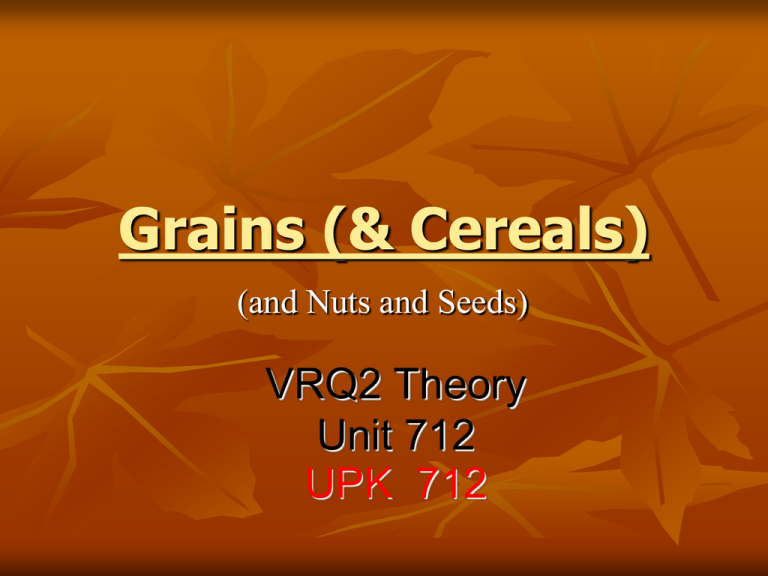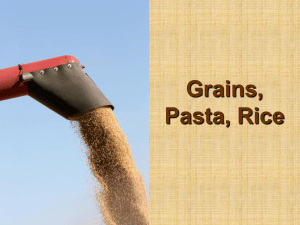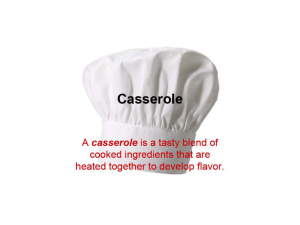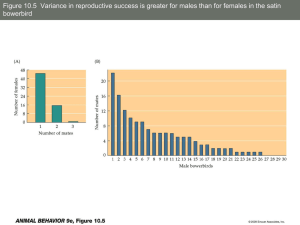Grains (& Cereals)
advertisement

Grains (& Cereals) (and Nuts and Seeds) VRQ2 Theory Unit 712 UPK 712 What is a Grain? A Grain is, by definition, the seed of grass type plants They are the means for the plant to reproduce it self The grain meets all the requirements to be a seed; an embryonic part, food supply and protective outer covering. They can be placed into 3 groups; Legumes, Nuts and Grains The importance of Grains Grains were probably one of the first food crops to be cultivated by man They are hardy and can survive in dry conditions (except Rice) They do not contain any defensive chemicals Their method of survival is by overwhelming numbers of seeds that they generate Barley, Wheat, Oats and Rye are the main grain crops in Europe Rice is the main Grain crop in Asia Corn (or Maize) is the main Grain Crop in the Americas Sorghum and Millet the main Grains in Africa Structure of Rice Types of Rice Basmati Rice Wild Rice Valencia/Paella Rice Calasparra Carnaroli Carmargue Red Bomba Nutrition of Grains Grains are a good source of B vitamins which are found in the Bran, which is usually removed They are rich in Starch (the main nutritional part) which are a good source of steady energy High in Soluble and Insoluble fibre Can help lower blood cholesterol and moderate blood sugar levels Problems with Grains Grains are a common cause of allergic reactions This is the body’s overreaction to a component of food; the body thinks that the food component is a bacterium or virus and so attacks it This reaction is mainly due to proteins, such as Gluten, found in Wheat, Barley, Rye and maybe Oats (Celiac/Coeliac) Rice, Corn, Buckwheat, Millet, Quinoa, Sorghum do not contain Gluten, so are safe for Coeliac’s Grain Cookery - Rice All grains contain 2 types of starch, Amylose and Amylopectin Amylose is a straight chain composed of glucose (~1000) molecules with few branches Amylopectin is a large branched molecule composed of 5000-20,000 glucose molecules Because Amylose is compact, the cooked result is firm Amylopectin cannot order themselves like Amylose, so the cooked result is “sticky” When you cook rice, you add water and bring to the boil, this causes the starches to absorb water and begin to separate out, giving the appearance of getting “plumper” Steaming rice takes longer, as the rice need to be soaked first, generally used as a regen method. This is called Gelation or Gelatinisation, it has nothing to do with gelatin, but is referring to the formation of a Gel The rices that have high Amylose content require more water and heat to separate, than the rice's that have a high Amylopectin content Risotto-Italy Made using Short Grain Rice (high in Amylopectin) Ratio of Stock to Rice is 3:1 Need to stir constantly to prevent sticking and to create the creamy consistency As the rice absorbs the water, it concentrates the other flavours Pilaff/Pilau – India Made using Long Grain Rice (high in Amylose) Ratio of Stock to Rice is 2:1 Need to cook covered in oven or on stove top, to maintain moisture Need to be precise in quantity of Stock used or rice will become too soft Stir Frying Pre cooked long grain rice is best, cool overnight. Allows the rice time to harden up, prevents sticking Egg in first, then other veg/meat/spices Finish with pepper/sesame oil Grain Cookery - Buckwheat Buckwheat is a Pseudocereal, in that it is not related to wheat The seed is ground down after hulling into the characteristic Brown/Grey Flour Main producer is Russia used like wheatflour, most famously for Blinis Structure of Wheat Grain Cookery - Semolina Semolina is derived from Wheat Flour production After the bran and germ has been removed, and the grains milled, they are sifted to retain particles of the appropriate size for semolina This is also the first stage for Cous Cous Semolina Semolina Gnocchi Semolina Cake Grain Cookery – Cous Cous Cous Cous is Semolina that has been moistened and rolled into wheat Flour Middle Eastern and North African in Origin Raw Cous Cous is Soaked then Steamed Precooked Cous Cous needs only to be rehydrated in boiling stock Cous Cous Salad Lamb Tagine Stuffed Pepper Structure of Corn Grain Cookery - Corn Most common in Europe is Polenta, dried corn that is ground to a coarse flour In the Americas, it is eaten young as a vegetable or treated with an alkaline solution to remove its hull, wet ground and made into tortillas. Polenta/Corn meal Polenta Corn Tortillas Nuts Peanut/Almond Macadamia Nut Sesame Lentils Chickpeas Questions ????







